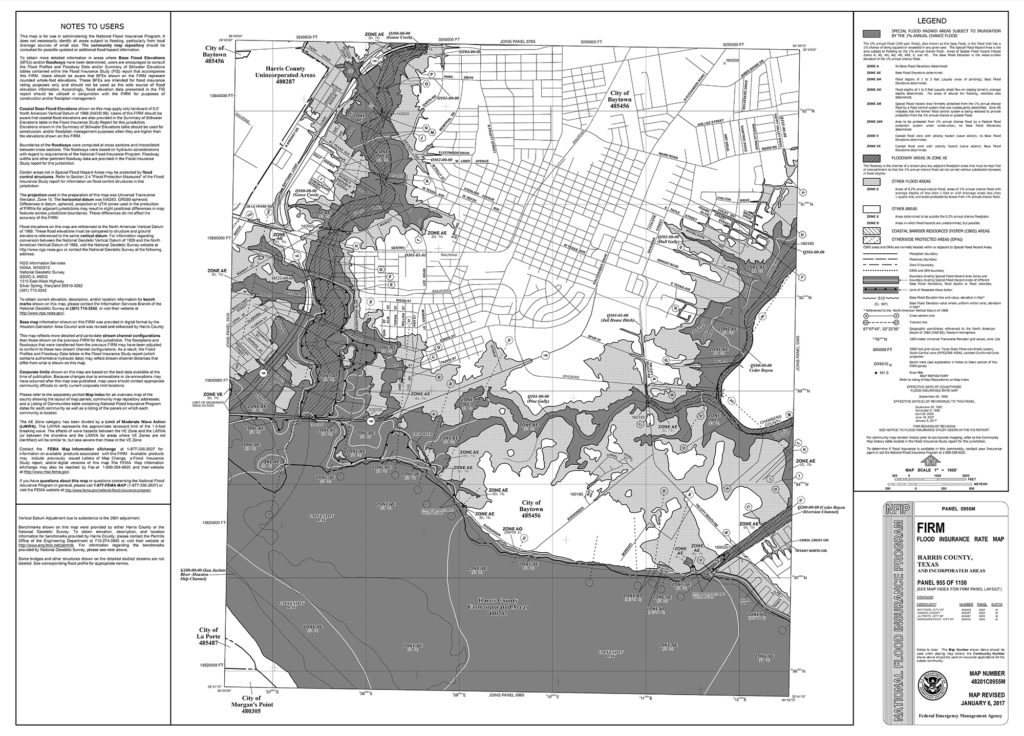Resilience Treatments & Strategies
Flood Risk

Description
The likelihood that your property will be inundated by floods. This includes flash floods and coastal storm surge. Several factors are important, including if your property is in a defined floodplain, the local topography, local infrastructure that could fail and cause floods (e.g., dams or levees), and strategies in place that address flooding.
Typical risk factor of this component:
Very High
The risk of flooding can be low depending on siting and mitigating factors, but flash floods can occur even outside of defined floodplains. The impact a flood would have on the building’s condition is always likely to be very high.
Other common conditions contributing to vulnerability towards floods or hurricanes
- Site in FEMA (100-year or 500-year) floodplain
- Site at risk of coastal storm surge flooding
Resilience Treatments and Strategies
In-house
- Adopt a wet floodproofing strategy: move all water sensitive assemblies, services/utilities, and movable heritage above BFE or DFE (you may need help from an architect or engineer for this).
Professional needed [type]
Raise building(s) above BFE or DFE. Keep in mind that this would have a substantial visual impact and would likely reduce integrity. You would have to consult with all necessary officials per your building’s historic designation [architect and engineer].
Adopt a dry floodproofing strategy if appropriate for the type of wall construction: apply a water-resistant coating to exterior walls and enable all openings to be made watertight during a flood [architect].
Construct a floodwall around property [architect, engineer and/or landscape architect].
Regrade the site to direct water away from the property (if legal for your local jurisdiction) [landscape architect or civil engineer].
Flood Risk

Description
The likelihood that your property will be inundated by floods. This includes flash floods and coastal storm surge. Several factors are important, including if your property is in a defined floodplain, the local topography, local infrastructure that could fail and cause floods (e.g., dams or levees), and strategies in place that address flooding.
Typical risk factor of this component:
Very High
The risk of flooding can be low depending on siting and mitigating factors, but flash floods can occur even outside of defined floodplains. The impact a flood would have on the building’s condition is always likely to be very high.
Other common conditions contributing to vulnerability towards floods or hurricanes
- Site in FEMA (100-year or 500-year) floodplain
- Site at risk of coastal storm surge flooding
Resilience Treatments and Strategies
In-house
- Adopt a wet floodproofing strategy: move all water sensitive assemblies, services/utilities, and movable heritage above BFE or DFE (you may need help from an architect or engineer for this).
Professional needed [type]
Raise building(s) above BFE or DFE. Keep in mind that this would have a substantial visual impact and would likely reduce integrity. You would have to consult with all necessary officials per your building’s historic designation [architect and engineer].
Adopt a dry floodproofing strategy if appropriate for the type of wall construction: apply a water-resistant coating to exterior walls and enable all openings to be made watertight during a flood [architect].
Construct a floodwall around property [architect, engineer and/or landscape architect].
Regrade the site to direct water away from the property (if legal for your local jurisdiction) [landscape architect or civil engineer].